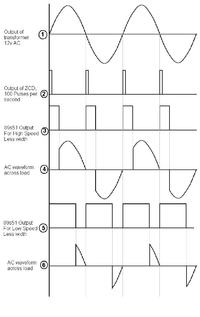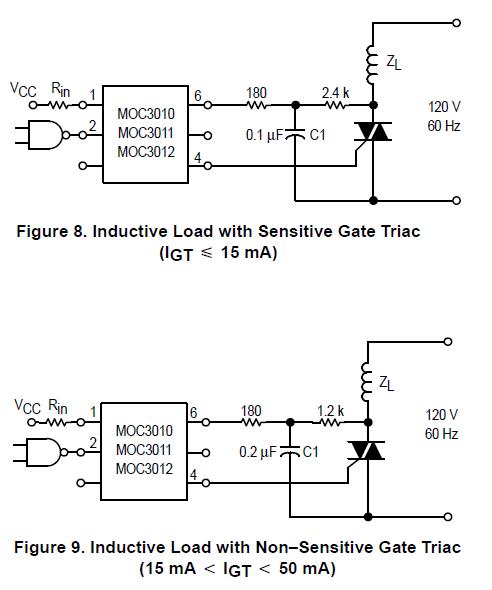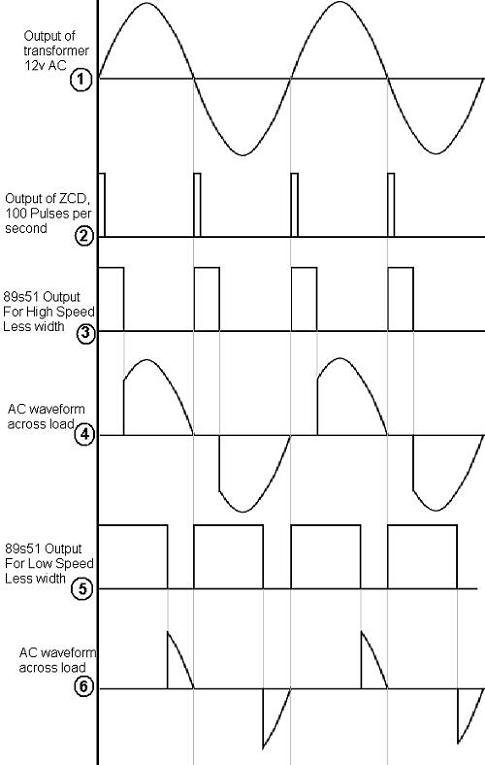rushi53
Member level 2

Hi, I am working on Temperature controlled fan. (or say, Fan Dimmer)
In this I have used 89s51, ZCD(using LM358), MOC3011 & BT136
Out of these, ZCD and 89s51 are working properly.
I require 0 to 10 steps for speed of fan.
When I set fan to zero speed, the fan is turned off, this is fine.
But when I set fan to speed = 1, fan is rotating with full speed (speed = 10)
so for variation between 1 to 10, fan is showing constant speed, which is wrong.
I am attaching the circuit of MOC3011 & BT136

Please help me finding the fault in the circuit. Or kindly suggest any replacement for this circuit.
In this I have used 89s51, ZCD(using LM358), MOC3011 & BT136
Out of these, ZCD and 89s51 are working properly.
I require 0 to 10 steps for speed of fan.
When I set fan to zero speed, the fan is turned off, this is fine.
But when I set fan to speed = 1, fan is rotating with full speed (speed = 10)
so for variation between 1 to 10, fan is showing constant speed, which is wrong.
I am attaching the circuit of MOC3011 & BT136

Please help me finding the fault in the circuit. Or kindly suggest any replacement for this circuit.





